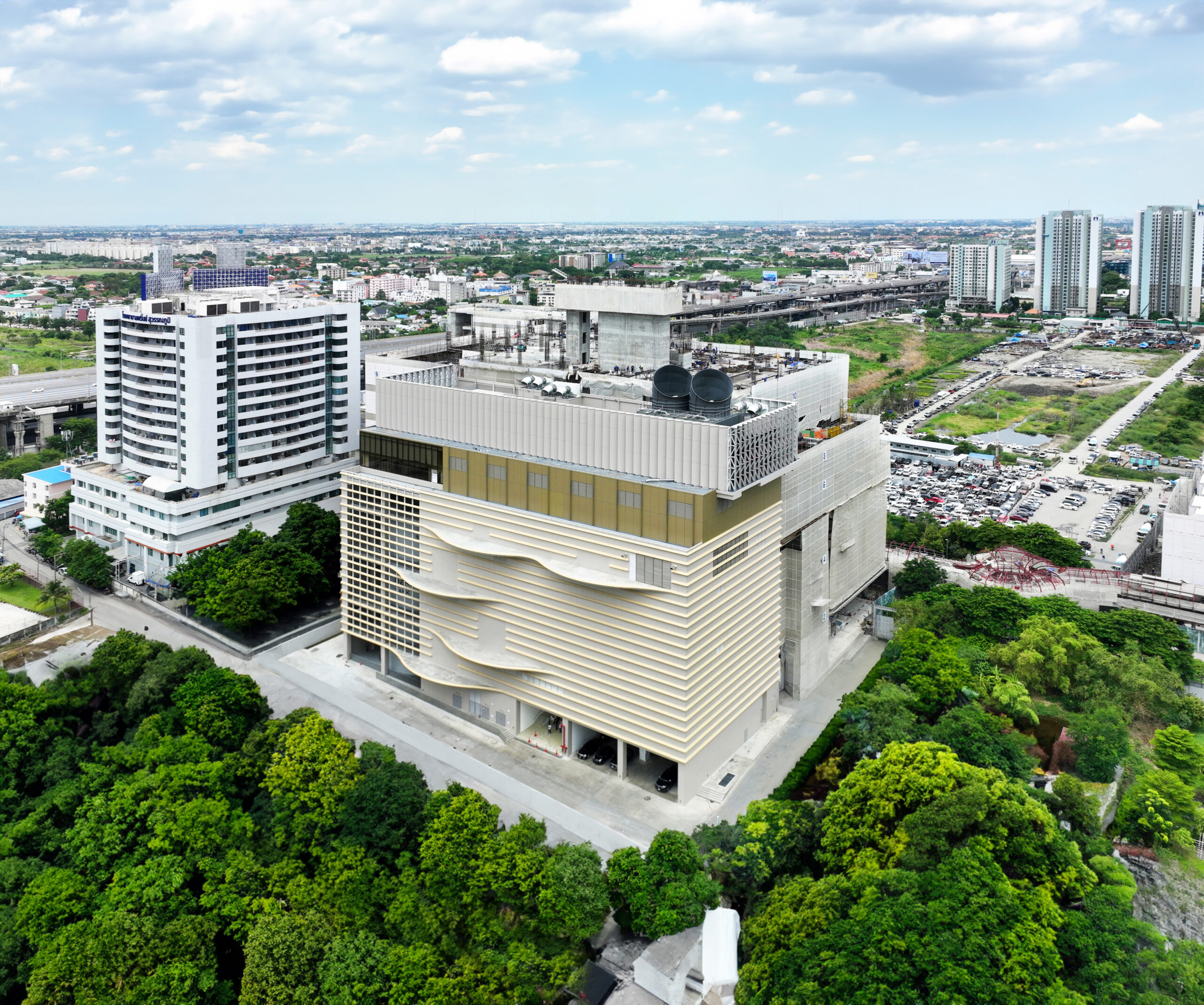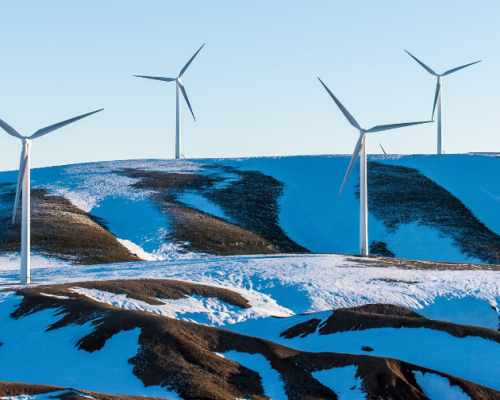The central utility plant (CUP) plays a crucial role in the district utility system (DUS), serving as the central hub for system operations and the production of public utilities. As the popularity of DUS continues to grow globally, discussions about CUP are becoming increasingly widespread.
What role does this building, considered the heart and strategic focal point of the district utility system, play? How does it contribute to the effective management of energy and resources? Is the central utility plant genuinely an enabler for sustainable operations and environmental preservation? These facts are particularly intriguing.
What Is the Central Utility Plant (CUP)?
Situated at the heart of the district utility system (DUS), the central utility plant (CUP) is a structure designed to accommodate machinery, production equipment, and all operational systems that the CUP can offer. These systems encompass electric power services, cooling and air conditioning services, water supply, drinking water services, and waste treatment services, among others.
Each central utility plant (CUP) may offer diverse utility services tailored to meet the specific requirements of the project or building it serves. For instance, an industrial estate might demand electrical services, air conditioning, and ventilation services, along with cooling services for machinery and production equipment. Conversely, residential community areas may necessitate different services, such as electrical power and air conditioning, without the need for ventilation or cooling services for machinery and production equipment, given the absence of such machinery in residential areas. This serves as a simple example illustrating the varying styles and objectives of projects or buildings with distinct utility needs. Services from the central utility plant will adjust accordingly to meet these diverse requirements.
“Central Utility Plant (CUP) is the central facility of the operating systems, machines, and equipment to produce supplies and utilities for communities or real estate projects, offering efficient use of energy and resources”
How Does a Central Utility Plant (CUP) Work?
The central utility plant (CUP) serves as a singular hub for the production of various utilities. These utilities are then distributed through an installed delivery network, such as pipelines, cables, or other delivery devices, to all user buildings connected to receive the service. The transmission network connections are clearly defined during the design stage of the central utility plant. Typically, CUPs are strategically located in proximity to the buildings or structures they serve. This strategic placement minimizes the need for excessively long delivery networks, ultimately reducing both the financial investment required and energy loss associated with long-distance transportation.

How Can a Central Utility Plant (CUP) Contribute More Energy Efficiency to Large Real Estates?
The central utility plant (CUP) offers utility services to large buildings with high energy demands. Centralized energy production from the CUP significantly enhances energy efficiency. Furthermore, utilizing a single large piece of equipment, the CUP, tends to result in less energy wastage compared to the use of numerous small devices.
What Are the Advantages of a Central Utility Plant (CUP)?
One notable characteristic of the central utility plant (CUP), contributing to its widespread popularity across various sectors, is its flexibility in designing systems to suit specific usage needs. The presence of a central utility plant allows building users to enjoy increased surrounding space. Additionally, the CUP aids in reducing the overall size of utility equipment by centralizing devices and operating systems, impacting the entire group rather than just one project or point.
The Benefits of a Central Utility Plant
- Easier Maintenance: Centralizing utilities enhances convenience for building users and reduces the long-term maintenance burden on technicians or engineers. The absence of the need to check multiple systems or transfer care from one building to another streamlines maintenance processes.
- Space Saving: Centralizing essential work systems, including temperature control, electricity, and drinking water services, leads to significant space savings. The freed-up areas within the building group or industrial unit can be utilized for additional benefits in various other areas.
- Reliable Work Systems: The central utility plant (CUP) boasts a sophisticated data backup and operations system, ensuring reliable power and utilities. This minimizes the risk of system downtime due to equipment failure, consequently reducing the substantial costs associated with restoring damaged equipment.

In Thailand, large real estate projects, featuring luxury homes and high-rise condominiums ranging from 85-314 square meters, employ air conditioning systems controlled by a district cooling system (DCS). The DCS utilizes chilled water from the CUP as a reactant to cool every residential unit.
The DCS, utilizing cooling water from the CUP, is recognized as a more energy-efficient cooling system compared to a general air conditioning system or variable refrigerant flow (VRF). The VRF is a cooling system where one hot coil can be connected to multiple coils, and the amount of refrigerant is calculated based on the diverse needs of each area.
Regarding the potential, both DCS and VRF systems have the same cooling load, both during on-peak and off-peak periods.
The electricity (EE) charge ratio between DCS and VRF is 1:29, signifying a lower cost for operating DCS across a residential unit. Despite the project owner needing to include the cost of cooling water from the CUP in the total energy charge, DCS remains 5.39% more economical than VRF.
Components and Services Provided by Central Utility Plant (CUP)
A central utility plant (CUP) comprises various systems that collaborate as a continuous network, generating tangible benefits for the operations of the building group or industrial unit utilizing its services. These systems possess operational characteristics and potential to support large-scale usage, comparable to the utilities supplied to a small city.
The internal systems of a CUP may vary based on the needs of the building group it serves. However, there are typically fundamental equipment and systems closely installed within the central utility plant, outlined as follows:
General Components and Systems in a Central Utility Plant
- Production Systems: Encompass various production systems provided by the central utility plant (CUP), varying based on the services offered by each CUP.
- Distribution Network: Forms a system for conveying and delivering various utilities or energy from the CUP to user buildings.
- Control and Monitoring System: Acts as a central hub for controlling, commanding, and monitoring all production and operations of the CUP. Additionally, it collects various information from operations and provides services.
- Power Generator: Facilitates the production of backup electricity. In emergencies such as power outages, a dynamo, serving as a direct current generator, acts as a backup for alternating current power.
- Cooling Tower: Removes heat from the building’s air conditioning system. The cooling tower facilitates a cooling process that lowers the temperature of water, enabling its circulation for further use.
- Pump Systems: Enhance energy addition to fluids, enabling movement to higher or farther positions.
- Distribution network: A system for conveying and delivering various utilities or energy that are provided by CUP to forward to user buildings.
Utility Systems Provided by a Central Utility Plant
- Air Conditioning and Air Quality Control Systems: Manage indoor air conditions, ensuring proper temperature, humidity, cleanliness, air distribution, and odor ventilation. This process may involve direct removal of hot air or internal circulation with refrigerant to dissipate heat from the area.
- Drinking Water System: Purify tap water flowing into and stored in the central utility plant (CUP) using international technology. The purified water is then distributed to surrounding buildings as fresh, clean drinking water directly from individual taps.
- Electrical System: Acts as the primary utility service supporting both cooling and heating systems. Components include interconnected electrical equipment such as feeders, switches, transformers, and distribution, crucial elements in some areas. In certain industrial estates, electrical systems serve as backups for critical loads. Some areas are designed to generate sufficient electricity to cover the entire area, eliminating reliance on the CUP’s electrical system to ensure stability in operations.
- Cooling System: Mainly consists of the chiller, the cooling system uses energy to produce a low-temperature liquid circulated throughout the space to create cooling. Other components include controls, pumps, heat exchangers, and cooling towers.
- Heating System: Primarily consists of the boiler, utilizing fuel energy to produce hot water distributed to various departments. The boiler includes a controller, burner, fan, and heat exchanger, functioning similarly to a normal system.
- Waste Disposal and Treatment System: Manages waste within the building from origin to final disposal. Examples include recycling, converting non-recyclable waste into heat, electricity, or fuel using renewable energy sources, and processing waste into methane-rich biogas.
“Central Utility Plant (CUP) or central utility building is the center of the operating system Machinery and equipment for producing public utilities for communities or real estate projects For efficient use of energy and resources”
The Projects Ideal to Implement Central Utility Plant (CUP) and Use Cases
A centralized operation through the central utility plant (CUP) not only enhances energy efficiency but also fosters building groups utilizing its services. The CUP excels in economies of scale, contributing to reduced energy costs. Therefore, a central utility plant is well-suited for projects or institutions encompassing a substantial number of buildings, covering an extensive area of approximately 50,000 square meters or more. This includes:
- Universities or school campuses
- Large institutions
- Industrial estates
- Hospitals and large medical schools
- Housing and real estate
- Mixed-use projects
- Data Centers
Use Cases of Central Utility Plant (CUP)
Industries worldwide widely employ central utility plants (CUPs), featuring centralized installations in international airports and providing utility services to large medical centers. Thailand, in particular, has embraced this system across diverse industries, including the heavy industrial sector, where CUPs are integral to emerging industrial estates. Additionally, mixed-use projects have incorporated CUPs to effectively manage and facilitate utilities for tenants or users.
Central Utility Plant at The Forestias
The inaugural residential and commercial building project in Thailand to integrate a central utility plant (CUP) is The Forestias. This mixed-use residential and building complex embraces innovation and modern technology, developed with a design concept aimed at bringing humans closer to nature. The project features a CUP that facilitates cooling and drinking water production systems for all buildings within the area.
The district cooling system (DCS) employed has a cooling capacity of only 20,000 RT, yet it efficiently provides cooling services equivalent to a conventional system with a cooling capacity of 32,323 RT. Additionally, the district drinking water system (DWS) can produce and deliver up to 5,000 units of clean, fresh drinking water liters per hour.
With the inherent benefit of economies of scale, the central utility plant and district utility system contribute to The Forestias’s significant reduction in electricity consumption, amounting to as much as 41,488 megawatt-hours per year. This reduction translates to a decrease in carbon dioxide emissions by up to 30,000 tons annually, equivalent to the environmental impact of planting 750,000 trees.
Unisus Green Energy Company Limited is a joint venture company between MQDC, EEC Engineering Network, and B.Grimm as a developer of “Sustainnovation” or sustainable and innovative utility systems. The company aims at finding solutions to fight climate change, creating a brighter, more sustainable world.
